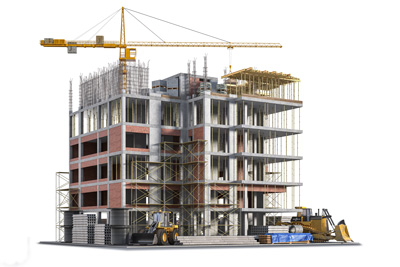Finding Your Path
Here We Go Again
By Lorne Polger, Senior Managing Director

The commercial real estate industry is facing some tumultuous times with a slowing economy, higher interest rates, significant reductions in availability of debt and equity capital, potential oversupply of new construction in some markets, and a wall of looming loan maturities. Multifamily, although much better protected than office and retail, is not immune from some of these strong headwinds.
Pathfinder was formed in 2006, in advance of the 2008 Great Recession, with the mindset that the economy was heading into a tailspin, and that chaos would create opportunity. There are enough indicators now for us to believe that problematic real estate situations caused by the referenced headwinds, along with excessive leverage, overly exuberant assumptions, and increased costs of debt, while just beginning to blossom today, will be in full bloom over the next couple of years. As a result, we believe that we’ll soon see opportunities for this next cycle of opportunistic investing.
Many Loans Issued in 2020-2022 Mature in 2023-2025 – and the Refinance Environment is Far Less Friendly.
From mid-2020 through mid-2022, a near-zero short-term interest rate environment and an abundance of equity capital created an environment where many multifamily investors overpaid for investments due to the highly competitive market, and then overleveraged their acquisitions to allow them to meet required return thresholds. Assumptions including strong occupancy, high forecasted rent growth and limited supply were used to justify aggressive acquisitions which predominantly used floating rate debt that was often, but not always, hedged with interest rate protection.
Values across all commercial real estate asset classes rose by 27% during 2020 and 2021, and apartment values were up a whopping 31%. While this was great for real estate investors in the short-term, it is not sustainable in the long-term. Historically low interest rates, a strong labor market and supply chain challenges resulted in the highest inflation rate (9.1%) in 40 years by June 2022. Once the Federal Reserve realized inflation was not “transitory”, it began a period of significant monetary tightening. The Fed has been adamant that it considers bringing inflation back to 2% as its top priority and will continue its policy of higher interest rates until such time that it believes its goal has been met. It is unclear today whether the Fed has stopped raising rates, or will impose another 25-basis point increase, but it is becoming clearer that higher rates will be here for an extended time.
Commercial real estate developers and investors, particularly those with uncapped floating rate debt, will feel the pressure of rising interest rates, particularly if their loan matures in the next year or two. Today, five-year loans are priced by the agencies in the high 5% to low 6% range, with bank loans in the 7% range. Some borrowers will choose to pay down their debt, whereas in a lower cost-of-capital environment, they would have re-levered. Maturity defaults will surely rise; the only question is by how much. As of July 2023, multifamily CMBS loans in special servicing remained low at 3.3%, but the rate has been inching up .
 As noted in a recent Globe Street article, $87 billion of multifamily loans which were originated during 2020-2021 will mature in 2023, another $96 billion will mature in 2024, and another $63 billion in 2025 – that’s nearly a quarter trillion dollars in total. Those maturities will occur at a time of significantly higher debt costs than when the loans were originated. And, at a time when lenders are not stretching to make loans.
As noted in a recent Globe Street article, $87 billion of multifamily loans which were originated during 2020-2021 will mature in 2023, another $96 billion will mature in 2024, and another $63 billion in 2025 – that’s nearly a quarter trillion dollars in total. Those maturities will occur at a time of significantly higher debt costs than when the loans were originated. And, at a time when lenders are not stretching to make loans.
Those borrowers will likely have four options upon loan maturity. Either conclude a cash in refinance (pay down a portion of the principal balance to right-size the loan for the current loan parameters), pursue some type of loan extension/modification, sell the property and likely take a significant loss, or give the keys back to the lender. Bank and debt fund maturities are heavily concentrated in the 2023 to 2025 period, which is not surprising given that these loans were more likely to be for transitional properties or to finance new construction. In contrast, government sponsored entities (i.e., Fannie Mae and Freddie Mac loans) have maturities concentrated in the second half of the decade and beyond.
Of note, banks are heavily exposed to this market (you didn’t think office buildings were their only headache, did you?). According to Globe Street, banks made 52% of the loans that will mature by 2025. A recent Wall Street Journal article noted that banks roughly doubled their lending to landlords from 2015 to 2022, with small and medium-size banks originating many of these loans. The problem today is that banks are under tremendous pressure to pay depositors a return on their deposits to keep them from fleeing to higher-yielding investment alternatives (at press-time, the yield on 6-month treasuries is 5.53% and bank Certificates of Deposit and money market accounts need to compete). Without inexpensive deposits, banks have less money to lend and to absorb losses from loans that default. As a rule, while banks do not want to take the keys back on any deal, a loan impairment can hurt a bank’s capital ratios, potentially leaving them and their borrowers with fewer options.
Interest Rates Remain Elevated after Unprecedented Interest Rate Hikes; Floating Rate Borrowers Particularly Impacted
The Federal Reserve’s stated objective is to restore price stability by reducing inflation to 2% (core Consumer Price Index (CPI) was far higher, 4.8% in July) and the Fed is willing to accept a higher unemployment, up to 4.5%, in the process. This would translate to total job losses of 1.8 million over the next year, which could be particularly tricky in a presidential election year.
The markets are predicting that rates will begin to decline in 2024 and this view is supported by the Fed’s dot plot, a projection mapping out policymakers’ expectations for where interest rates could be headed in the future. Fed officials now see the Federal Funds rate slowly coming down to 4.6% (from 5.25%) in 2024 (Yahoo Finance). Officials see unemployment rising to 4.1% in 2023, well below the previous 4.5% forecast. Unemployment is expected to tick up to 4.5% next year and remain at that level through 2025. With key measures of inflation still notably hot (particularly core CPI), the Fed is wary of pivoting prematurely and of a double-dip, wherein inflation reaccelerates much like it did in the ‘70s and ‘80s.
The Summary of Economic Projections, a consensus of Fed officials’ assumptions for monetary policy and economic conditions, showed that most members now expect fewer rates cuts next year as compared to their June estimates. Following this past week’s meeting, most officials now expect the Fed’s key interest rate to end up somewhere between 4.88% and 5.62% in 2024, versus the previous range of 4.38% and 4.62%. That indicates fewer rate cuts and that rates could remain elevated for longer than previously expected. This would imply that treasuries could drift up through 2023 as these cuts may fail to materialize. As a result, we believe interest rates will be higher for longer, negatively impacting the commercial real estate market and more specifically, both borrowers and their lenders with floating rate debt and looming maturities.
 We have begun to see examples, for properties acquired at the peak (2021-2022) with floating rate debt, where cash flow is inadequate to cover elevated debt service and fund capital improvement projects (i.e., cash flow is now inadequate to execute the business plan!). Loan draws for renovations have been suspended by sponsors or their lenders, which will reduce income growth. For newly constructed apartments being delivered in various high supply markets over the next two years (cities like Austin, Salt Lake City and Orlando will see record deliveries), we believe select projects will experience slower, concessionary lease-ups that fall short of rent projections underwritten two or three years ago in a very different economic environment. In addition, take-out financing from construction loans will be at significantly higher interest rates and lower leverage ratios than anticipated at project inception in 2020-2021. Significant cash infusions will be needed to refinance those loans. This need for additional equity will create opportunities through rescue capital vehicles, forced sales, and in some cases, foreclosures.
We have begun to see examples, for properties acquired at the peak (2021-2022) with floating rate debt, where cash flow is inadequate to cover elevated debt service and fund capital improvement projects (i.e., cash flow is now inadequate to execute the business plan!). Loan draws for renovations have been suspended by sponsors or their lenders, which will reduce income growth. For newly constructed apartments being delivered in various high supply markets over the next two years (cities like Austin, Salt Lake City and Orlando will see record deliveries), we believe select projects will experience slower, concessionary lease-ups that fall short of rent projections underwritten two or three years ago in a very different economic environment. In addition, take-out financing from construction loans will be at significantly higher interest rates and lower leverage ratios than anticipated at project inception in 2020-2021. Significant cash infusions will be needed to refinance those loans. This need for additional equity will create opportunities through rescue capital vehicles, forced sales, and in some cases, foreclosures.
The Types of Opportunities We’re Forecasting
High Leverage Acquisitions Made in 2021 and 2022
With market rents surging in 2021 and 2022, a record number of apartment investors utilized floating rate debt securitized as commercial loan obligations (CLO) to amplify leverage to 75% or higher to acquire properties at historically low capitalization rates. These loans are most impacted by the Fed’s raising short-term rates at a time when rent growth and occupancy rates slow or even fall.
Multifamily rentals accounted for two-thirds of the CLO’s issued in 2021 ($30 billion) and 81% of those issued in 2022 ($24 billion), according to real-estate data firm Trepp. In addition, many of the acquisitions were financed with high leverage loans financed by debt funds.
Nearly $88 billion in securitized mortgages are at risk of default, and 42% of them are backed by apartment buildings ($37 billion). Trepp estimates multifamily CLO’s originated primarily by debt funds comprise most of these at-risk apartment loans.
Opportunistic acquisitions of properties financed with maturing floating rate debt could remain elevated for an extended period if interest rates remain at or near current levels, requiring additional equity for loan refinances. For floating rate borrowers unable to infuse fresh equity, the only option besides selling at today’s depressed prices is to purchase a new interest rate cap that is 8-10 times more expensive than the original to qualify for a short-term loan extension, while also potentially having to infuse additional capital to meet debt service coverage ratios. Not all borrowers will be willing or able to do so.
New Construction Projects
 While projects currently under construction are running at record highs, many of these are mid- to high-rise buildings with multi-year construction periods.
While projects currently under construction are running at record highs, many of these are mid- to high-rise buildings with multi-year construction periods.
Regionally, projects under construction will increase inventory by more than 10% over the next couple of years in several markets including Austin, Charlotte, Denver, Miami-Ft. Lauderdale, Nashville, Raleigh, and Salt Lake City. While permits were also robust in 2022, tighter credit markets will likely slow down projects that have not already secured financing.
We believe there will be significant opportunities to provide rescue capital for newly constructed properties over the next several years. Higher leverage construction loans with aggressive underwriting assumptions will require additional capital due to reductions in available leverage and higher debt service requirements for permanent financing. Many properties may be forced to sell at discounted prices should they not accept rescue capital to fill the gap in their capital stack.
We’ve been here before. Pathfinder’s roots in the distressed investing space run deep. We do not expect to see anywhere near the volume of opportunities that we saw from 2007-2012, but there will be opportunities. Since the beginning of this year, there has been about $50 billion in capital raised for distressed investment along with about $100 billion in existing commercial real estate funds. We will position ourselves and our investors to be able to capitalize on some of these opportunities over the next couple of years.
Lorne Polger is Senior Managing Director of Pathfinder Partners. Prior to co-founding Pathfinder in 2006, Lorne was a partner with a leading San Diego law firm, where he headed the Real Estate, Land Use and Environmental Law group. He can be reached at lpolger@pathfinderfunds.com.
Share this Article
